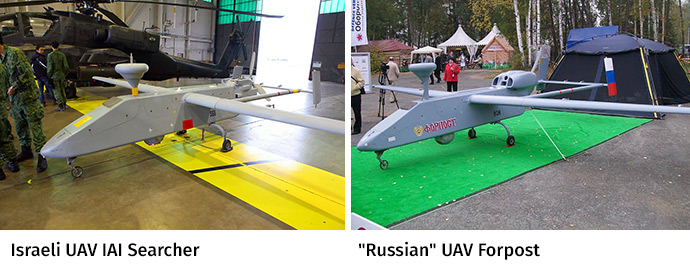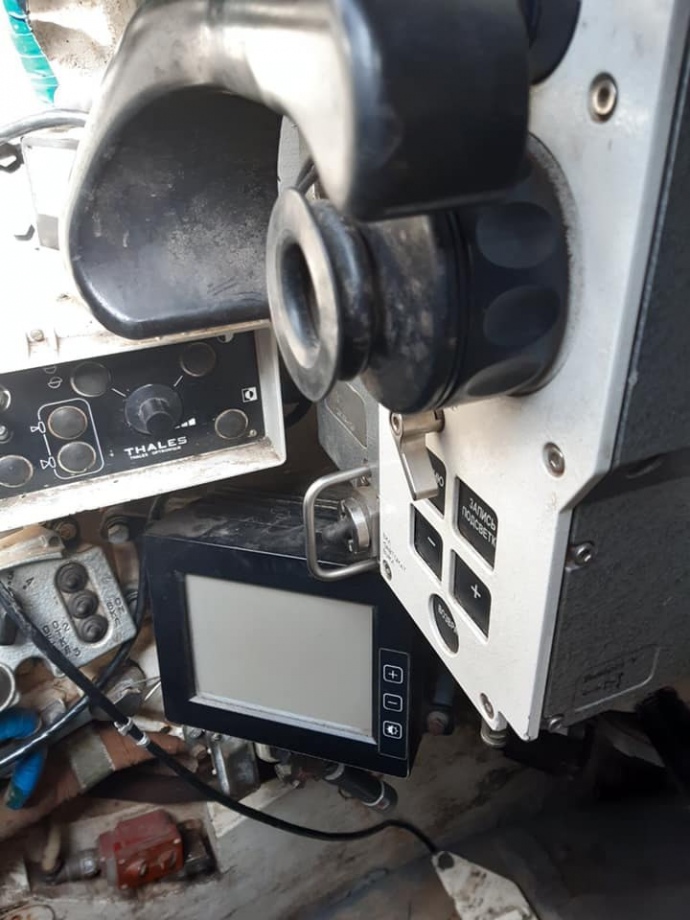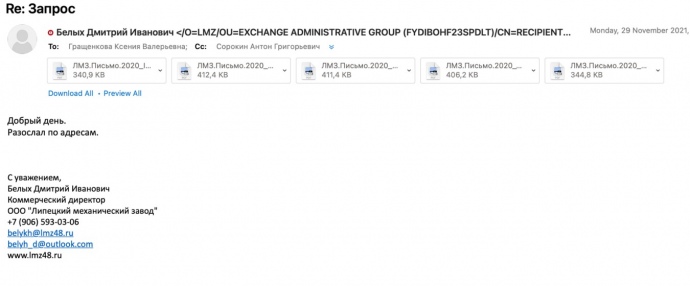A broken embargo. How Russia circumvents sanctions on weapons imports

Sanctions against Russia and its military-industrial complex in 2014 turned out to be very weak. The Russians сircumvented them, and the United States and EU countries "did not notice" the loopholes and continued to cooperate with the aggressor.
For eight years, nothing prevented the occupier from equipping its tanks, planes, ships, and military vehicles with Western materiel and preparing for a new major massacre in central Europe.
Only now are Western countries beginning to take the first steps to close loopholes for Russia's military industry, which has already taken the lives of tens of thousands of Ukrainians.
Equipment with Western "filling" that kills Ukrainians
Russia's military-industrial complex (MIC) is not self-sufficient. Most of the occupying country’s military equipment contains components from "unfriendly countries". Russian drones would be a good example, as they are actually being built for Russia by the whole world.
Thus, the "Orlan-10" drone contains a GPS module made by the Swiss company U-blox, an engine by the Japanese SAITO, a starter-generator from American Texas Instruments Incorporated and a flight controller made by the French-Italian STMicroelectronics.
The "Forpost" drone is a copy of the Israeli IAI Searcher. "Forposts" are assembled at the "Ural Civil Aviation Plant" using Israeli technology and American and German spare parts.

Cooperation with the French electronics manufacturer Thales was also important for the Russian military-industrial complex. By 2020, more than a thousand Russian tanks had been modified by this company’s equipment.
In particular, Thales' Catherine FC thermal imager was used to create ESSA, PLISSA and Sosna-U targeting systems. They are mounted on modified tanks T-80, T-90 and T-72 and other combat vehicles.
Since 2009, these thermal imagers have been assembled in Russia at the "Volga Optical-Mechanical Plant", under a licensing agreement with the French manufacturer. The thermal imagers allow the gunner to see the enemy from a few kilometres away, even at night.
Tanks with French equipment were used during the invasion of Donbas in 2014. This is evidenced by a video from the inside of a Russian T-72, which the militants of the [self-proclaimed] "LDPR" [Luhansk and Donetsk People’s Republic] tried to pass off as a trophy. Tanks with similar equipment were seized during the Russian invasion in 2022.

Furthermore, French thermal imagers were found on Russian BMD-4 amphibious infantry fighting vehicles, which shot at civilian cars in Bucha.
According to the investigative journalist publication Disclose, Thales has also equipped 60 Russian SU-30SM fighters with the navigation systems. Aircraft with this modification fired on Syrian cities several years ago. In March of this year, several were shot down in the sky over the Ukrainian cities of Vasylkiv and Brovary.
The equipment even comes from Russia's main enemy country, the United States. Even though the Russians officially deny buying American weapons, components from the United States are often found in Russian technology.
The Russians don’t hide the fact that they put American Flir thermal imagers on small warships. Components from the United States are also used in the Russian "Forpost", "Zastava", "Granat" and "Orlan-10" drones, according to the Russian publication "Military Review".
KamAZ-65225 tractors run on American Cummins engines and on German ZF Friedrichshafen gearboxes. These trucks from the Russian car industry are used to transport "Pantsir" missile systems, tanks and artillery systems.
The Russian "Lynx" armoured car is actually an Italian Iveco LMV. According to the publication "Russia Beyond", hundreds of these cars were delivered to Russia at least until 2016. The Italians also sold rifles, pistols and ammunition to the occupiers a few months before Russia's invasion of Ukraine, according to an "Investigate Europe" investigation.
Avionics and aircraft engines are other loopholes. The Russians have problems supplying their own aircraft with components. They repeatedly tried to establish smuggling routes from Finland and Ukraine to supply modern combat aircrafts with imported spare parts.
Russian factories also use machines and consumables from Germany, the United States and Switzerland to be able to produce modern weapons. There are no analogues of these tools in Russia.
Broken sanctions
After the annexation of Crimea and occupation of part of Donbas in 2014, the European Union imposed sanctions on Russia and banned the export of weapons and "dual-use goods" (optics, electronics and other spare parts that can be used in armaments).
However, EU countries did not stop supplying weapons and components to the occupier. There were loopholes used by European companies.
The first loophole is that the text of the 2014 EU Council decision on sanctions against Russia has the following exception: the embargo does not apply to contracts concluded before Russia's invasion of Ukraine. This allowed weapons manufacturers to conclude additional agreements to previous contracts with Russia.
The second loophole refers to "dual-use" goods. On paper, supplying these to Russian military enterprises was prohibited, but in reality European spare parts and machines were regularly delivered to Russian military-industrial complex plants.
The sanctions imposed by the European Union in Council Regulation (EU) No 833/2014 contained another exception: a member state can issue an authorisation to export goods if it is confident that these goods will not be used for military purposes.
This vague wording allowed dual-use goods to be supplied to Russian intermediaries or distributors, who later resold them to military companies.
The European Council on Conventional Arms Exports has estimated that between 2015 and 2020, ten European Union countries exported arms to Russia worth €346 million. Germany and France used this loophole the most, accounting for 80% of all deliveries.

How Russians circumvent sanctions: examples
Case 1. The Russian Lipetsk Mechanical Plant (LMP) produces tractors for the S-300 anti-aircraft missile system. This enterprise was not under Western sanctions in 2014 and was free to negotiate with foreign companies.
From correspondence by the plant's top managers, which became public after having been hacked by the hacker group Anonymous, it was revealed that representatives of the Russian company were negotiating with foreign manufacturers on behalf of the Kalashnikov Concern, which was under EU sanctions.
The correspondence showed that the commercial director of the Russian Lipetsk Mechanical Plant, Dmitry Belykh, helped the Kalashnikov Concern to find a line for bullet production and even received a commercial offer from the Belgian manufacturer New Lachaussée.
The fragments of correspondence between LMP and Kalashnikov Concern that attest to this are reproduced below.
On 29 November 2021, Kseniya Grashenkova, Adviser to the Kalashnikov Purchasing Director, asked Dmitry Belykh to send commercial requests for the purchase of a bullet production line to a number of foreign companies: Atech (Turkey), Invernizzi Presse (Italy), Manhurin K’MX (France), New Lachaussée s.a. (Belgium) and Vasini (Italy).
Belykh reports to Grashenkova that he sent requests to the mentioned addressees.

The further correspondence is conducted under the following scheme - "Kalashnikov Concern'' - "Lipetsk Mechanical Plant" - an international manufacturer. Most companies did not respond. The Italian Invernizzi Presse began negotiations, but later stopped communication.
However, on 3 December 2021, Belykh received a letter from a representative of the Belgian company New Lachaussee s.a., Igor Pozhivil. His contacts were forwarded to the Kalashnikov Concern by the commercial director of LMP.
This is followed by active correspondence between Belykh and a representative of New Lachaussée s.a., as a result of which the latter sent a confidential commercial offer for the bullet production line.
The proposal is addressed to the Tula Arms Factory and signed by the Belgian directors. The Tula plant is also an indirect member of the Russian state company Rostech, as is the Kalashnikov Concern.
Belykh sent all the information to Grashenkova of the Kalashnikov Concern.
Case 2. Information on how the Russian military-industrial complex buys Western equipment and components can also be found on the official website of Russian public procurement.
The team led by the Ukrainian businessman Dmytro Dubilet presented a public list of foreign companies whose products appeared in the tenders of companies associated with the Almaz-Antey concern of the Russian military-industrial complex.
The Russian Almaz-Antey concern has been producing anti-aircraft missiles and radar equipment for the Russian army, including the infamous "Buk" missile systems (C300, C400 and C500), and has also been under sanctions since 2014. Europeans are forbidden to trade with this company directly and indirectly, even through dealers.
However, the enterprises of this concern issue calls for tender for foreign manufacturers' products. Probably, the goods are first delivered to "peaceful" Russian companies, through which they are then delivered to the military.
For example, the concern needed a lubricating coolant for metalworking from the leading German manufacturer Techlube GmbH. According to public procurement, the call for tender by the concern was won by the little-known Russian limited company Quarta, which is not related to the military sector.
This is how Almaz-Antey closed tenders for equipment from the Swiss Blaser Swisslube, American Nvidia and Indium, German Zoller, Walter, and Techlube GmbH, and the British GARANT, and no sanctions prevented this happening.
Exports of dual-use goods in Russia are quite extensive. According to the publication Welt am Sonntag, in 2020, Germany alone issued 673 export licences to Russia for 366 million euros.
Some companies supplied goods for military use even without obtaining special licences. For example, the German Bosch company insisted that it had sold car equipment exclusively for peaceful purposes, but then its equipment was found on Russian infantry combat vehicles seized by the Ukrainian army.
Also, Russian military experts say that the gearbox from the German ZF Friedrichshafen has long been an indispensable component for the KamAZ-65225 military tractors, which transport heavy weapons.
What has been changed
Some of the mistakes made in 2014 were fixed during a new wave of sanctions. The EU has removed the loophole which allowed supplying weapons to Russia under old contracts, which was used by European manufacturers.
The list of companies associated with the Russian military-industrial complex has been expanded, sanctions have been tightened against them, and a number of manufacturers have stopped supplying spare parts to Russia.
However, the problem with dual-use goods remains. The second package of EU sanctions, adopted on 25 February, provides a broader ban on exports of these goods to Russia, but again there are some exceptions.
First, export restrictions did not affect contracts that had been concluded before the war. Secondly, the EU has left a short list of conditions under which dual-use goods can still be delivered to Russia.
The official list of dual-use goods from the EU probably needs to be supplemented, as it does not include some of the components used by the Russian army. First of all, there are car parts.
Any export of dual-use goods to Russia can be used in the military-industrial complex. This means that the ban on trade in technology must be comprehensive and without any exceptions.
Bohdan Miroshnichenko, Dmytro Denkov